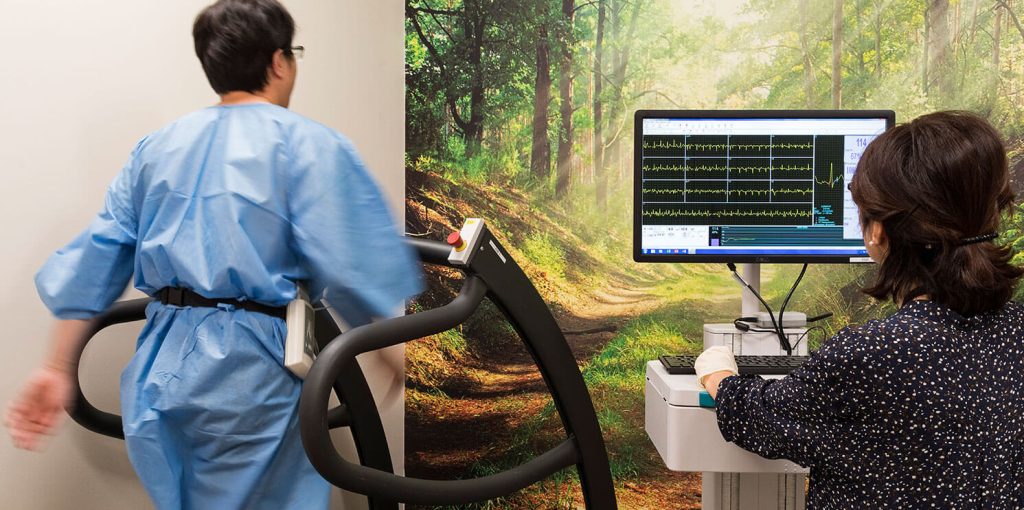Stress or Exercise Echocardiogram
What is a stress echocardiogram?
A stress echocardiogram is a non-invasive exercise test, which involves obtaining ECG recordings and ultrasound images of the heart at baseline and during or immediately after exercise.
How is a stress echocardiogram performed?
If you are male, you will be asked to take off your shirt or top off. If you are female, you will be asked to change into a gown. The technician or cardiologist will stick ten electrodes to your skin to obtain ECG recordings of your heart throughout the test. You will be asked to lie on the bed and turn to your left. An ultrasound probe will be used to obtain images of your heart at rest.
You will then be asked to get up and step up on the treadmill. A blood pressure cuff will be applied to your arm to enable blood pressure measurements throughout the test. The treadmill will start slowly and will increase in speed and slope according to a set protocol. The treadmill will be stopped by the cardiologist or technician when you have achieved a set target. The treadmill will also be stopped at any time should you request it. You will be asked to report any symptoms such as chest pain, shortness of breath or dizziness. An average person spends 5 to 10 minutes on the treadmill depending on age and fitness level.
Once the treadmill is stopped, you will be asked to get back to the bed as quickly as possible and lie on your left side. Ultrasound images of your heart will be obtained while your heart is still beating quickly.
Why is a stress echocardiogram performed?
To provide an assessment of heart function during exercise stress. This test can provide information about exercise tolerance, and detect narrowings or blockages of the blood vessels that supply the heart. It is sometimes used to evaluate the severity of heart valve or other types of heart disease. The commonest use of this test is to determine a person’s risk of suffering a heart attack.
Do I need to prepare for a stress echocardiogram?
It is advisable to wear comfortable shoes and clothing. You do not need to fast but your stomach should not be too full when undertaking the test.
Are there any risks with a stress echocardiogram?
Yes, but these are very low. There is less than one in 10,000 risk of having a heart attack, experiencing a serious heart rhythm disturbance or death associated with the test. In addition, it would be preferable to undertake exercise in a supervised setting, so that any issues identified can be dealt with promptly.





